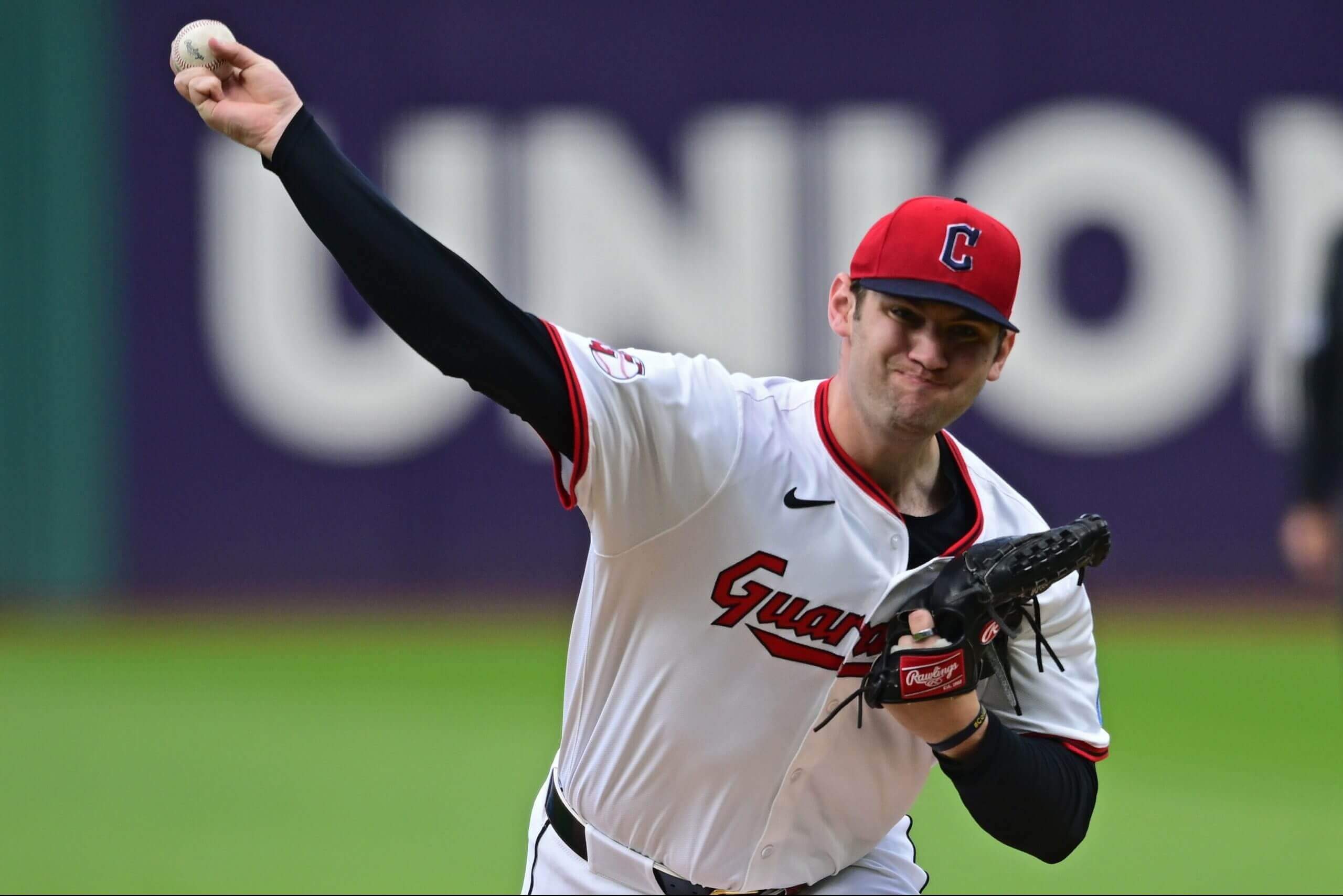
This Guardians homestand had everything. For 10 games in 11 days, the Guardians took a series from the Yankees, suffered consecutive drubbings against the Red Sox and Twins, had position players pitch on back-to-back days, sat through a three-hour, rain-free rain delay and cycled through a slew of relievers. And after all that, they still managed to go 6-4.
Advertisement
Remember Zak Kent, Cody Bolton and Doug Nikhazy? They each came and went after one appearance during the homestand. José Ramírez became the league’s first third baseman to record 250 home runs and 250 stolen bases (and, no, not all of them came during this homestand). The last time the Guardians played a road game, Triston McKenzie and Lane Thomas were members of the active roster.
Anyway, let’s examine some Guardians trends as they head to Toronto.
Three good things
Kyle Manzardo is on pace for 42 home runs.
He’d be the first Cleveland hitter with a 40-homer season since Travis Hafner in 2006. More than anything, Manzardo looks like a legitimate middle-of-the-order hitter, precisely what the Guardians were dreaming of when they flipped Aaron Civale to the Rays for him two years ago.
Manzardo has healthy chase and walk rates, meaning he’s patient enough to force the pitcher to throw him something in the zone that he can clobber. His strikeout rate (25.7 percent) isn’t unbearable, either. Those qualities allow him to wiggle free from a funk quicker than an all-or-nothing type of slugger.
And while the muscle is certainly welcome, it’s also an encouraging sign when Manzardo can whack a belly button-high fastball up the middle for an RBI single, as he did in the first inning Thursday.
Triston McKenzie can start fresh.
The Guardians could have stuck with McKenzie in their bullpen, seeking opportunities for him to pitch in low-leverage situations. Or, once McKenzie cleared waivers, the Guardians could have stuck him on the staff at Triple-A Columbus and let him attempt to work through his struggles in the minors.
Instead, they sent him to their complex in Arizona, where he can trigger a system reboot.
“We always talk about leverage, high-leverage,” said Cleveland pitching coach Carl Willis. “Look, when you’re in the major leagues, every hitter you face — it’s leverage to you, because you’re trying to get big-league hitters out. Maybe (this takes) away a little bit of the urgency to get the results you’re looking for and (he’ll) be able to focus on the process, how you’re going to do it. (When) the results aren’t as critical, hopefully that allows him, from a mental standpoint, to really attack what he needs to attack.”
Advertisement
McKenzie will be sweating because the temperature in Goodyear is approaching triple digits, not because he’s standing atop the mound with the bases loaded and with a lack of confidence in his curveball and slider.
The Guardians want him to spin those secondary pitches into the strike zone more often to keep hitters from sitting on — and feasting on — his fastball. This should provide him a low-pressure setting to take a deep breath and chart a path back to pitching with conviction in the big leagues.
Luis Ortiz has shown flashes.
Ortiz had a wretched spring and a nightmarish regular-season debut with the Guardians. However, he has submitted four solid-to-splendid outings in his last five starts. If you remove his first start, he has posted a 3.29 ERA, with 34 strikeouts and a .196 opponent average in 27 1/3 innings.
His walk rate is a bit high. He’s searching for consistency with his command and the right mix for his five pitches. Manager Stephen Vogt gushed about Ortiz’s sinker after the righty blanked the Twins for 6 1/3 innings on Tuesday. That sinker induced a ton of weak contact, an average exit velocity of 86.1 mph, compared to 92.9 mph in his five previous starts.
Ortiz has boosted his strikeout rate and ground ball rate this season, which are promising steps forward. His whiff rate has soared to the 78th percentile from the 13th percentile last year. There’s a lot to build on for a guy settling in with a new team, new catchers and new pitching instructors, but it’s easy to see why the Guardians targeted him on the trade market.
Three not-so-good things

Gavin Williams had an electric spring but has been inconsistent in the regular season. (David Dermer / Imagn Images)
We’re waiting for Gavin Williams to get in a groove.
There’s a fine line between Ortiz and Williams this season. (How appropriate, then, that there’s an actual fine line between their sections in this piece.) Williams’ six starts this year have gone, to put it generally, good, bad, good, bad, good, bad. So why is he in this part of the article, while Ortiz is lounging, cocktail in hand, on the other side?
Advertisement
Well, Williams teased everyone with an electric spring. It wasn’t just his Cactus League numbers, but the pure dominance, the data, the raving by anyone who watched him, whether blowing away hitters in live batting practice sessions or making quick work of hitters at Goodyear Ballpark.
He has showcased that ability in certain starts this year, just, you know, only half of them. He fared well against the Royals in the club’s second game of the year, but went only three innings against the Angels. He quieted the White Sox, but labored against the Orioles. He pitched brilliantly against the Yankees, but was yanked after two innings against the Twins.
One of Williams’ best starts as a big-leaguer came against the Royals last September, when he held Kansas City to one hit across seven innings. Five days later, he failed to escape the first inning at Dodger Stadium. A pursuit of consistency isn’t new.
For the Guardians to reach the heights they want to reach, they need Williams to emerge as a steady force. This doesn’t apply only to him, either. Ortiz and Tanner Bibee must follow suit.
“We’ve challenged those guys,” Willis said. “We talked to Gavin after the Yankees start (and said), ‘Listen, this should be the floor. This should be your expectation of yourself every fifth day.”
Willis also stressed, “You can’t take a guy in one day and introduce a new pitch or totally clean up a delivery in one shot. There has to be some patience.”
Vogt said a starting pitcher is equipped with his “A stuff” for 20 percent of his outings and with “nothing” for 20 percent of his outings, leaving him to figure out how to convert the 60 percent in the middle into quality efforts. “That’s the separator,” he said.
“We’re looking for consistency,” Willis said, “and with young guys, sometimes that takes a while to show itself.”
Advertisement
What happened to playoff Rocchio?
Though Gabriel Arias started at shortstop Tuesday and Wednesday, Vogt insisted Brayan Rocchio is still the club’s starter at the position. It’s been a rough go for Rocchio, with listless offense, some base running gaffes and uncharacteristically subpar defense. Rocchio’s 11-for-33 showing in the 2024 postseason seems like a distant memory.
Rocchio’s .240 slugging percentage ranks fifth-worst in the majors. Among players with at least 500 plate appearances since the start of the 2024 season, Rocchio ranks second-to-last in OPS (.599), slugging percentage (.305) and extra-base hits (29) and fourth-last in batting average (.206). He’s probably fortunate that Juan Brito is sidelined for a couple of months following thumb surgery. But it’s worth noting Vogt commended the recent play of Arias and Daniel Schneemann, and it’s worth monitoring how the reps are divvied up moving forward. Nolan Jones pinch-hit for Rocchio (and not Austin Hedges, who was on deck) to lead off the seventh with the score tied on Thursday.
Is it a typical Carlos Santana slow start, or is he showing his age?
At 39, it’s difficult enough to roll out of bed without a backache or knee soreness. So, imagine uncorking thousands of swings throughout a summer. Through the end of April, Santana posted a .219/.300/.295 slash line. The statistic that seems most worrisome? Four extra-base hits.
He’s had worse first acts. He logged a .280 slugging percentage through April in 2014, .276 in 2018 and .200 in 2022. But it’s fair to wonder if this latest sluggish start is more habitual or age-related.
He’s appeared in more games than any active player, aside from Pittsburgh’s Andrew McCutchen. He has totaled 8,900 plate appearances. Jake Westbrook started for Cleveland in Santana’s big-league debut. Russell Branyan hit behind him. Trevor Crowe batted leadoff. You get the idea. He’s been around a long time. We’ll see if he can continue to defy Father Time.
(Top photo of Kyle Manzardo: Ken Blaze / Imagn Images)
This news was originally published on this post .





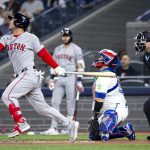
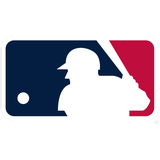


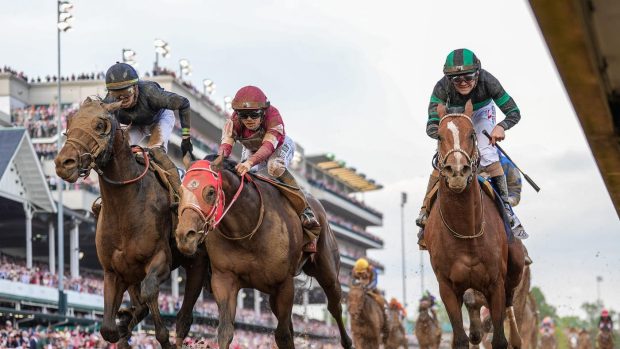
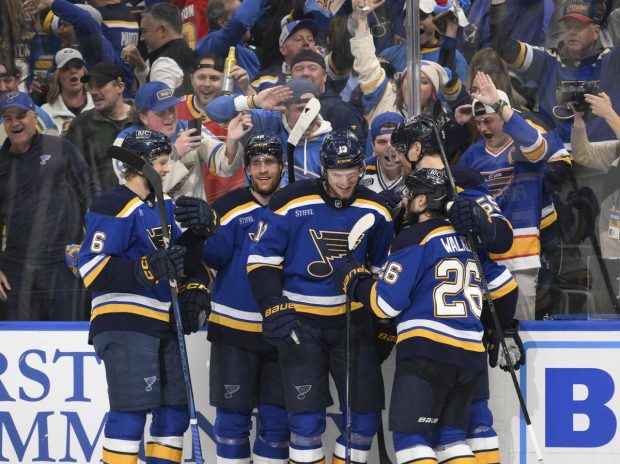
Be the first to leave a comment